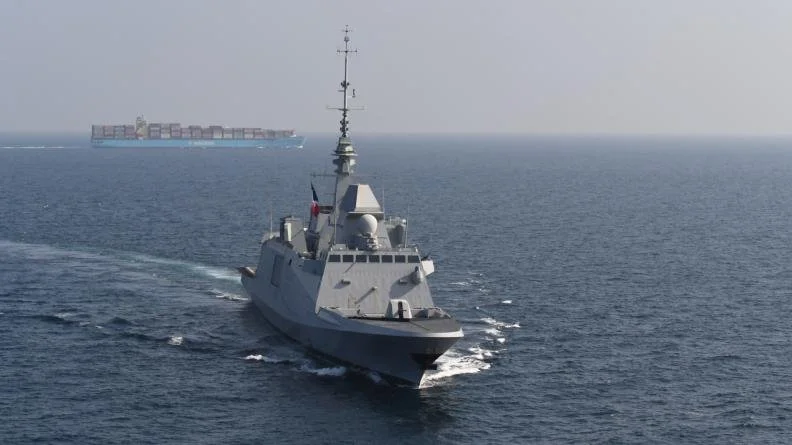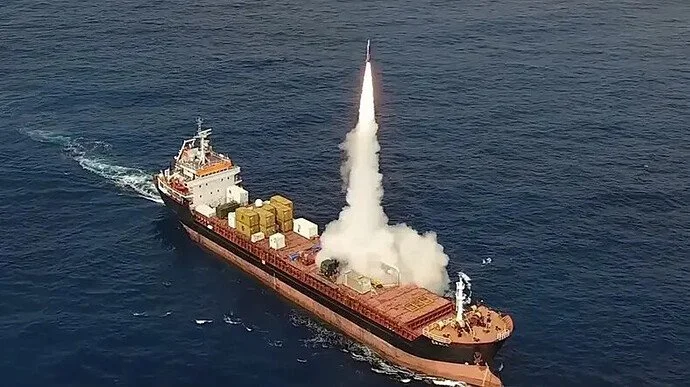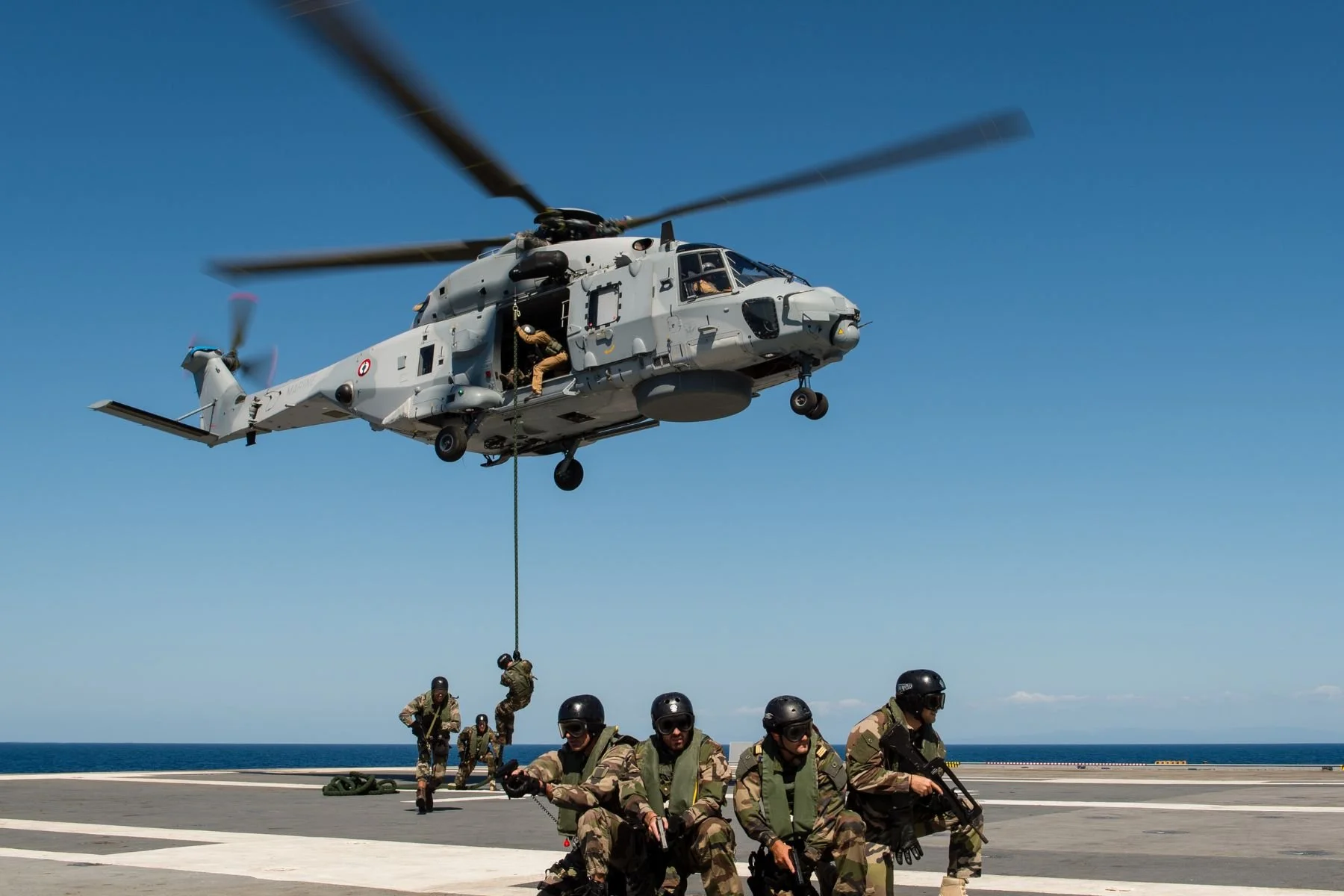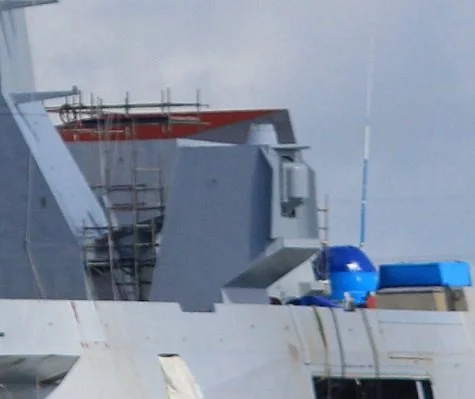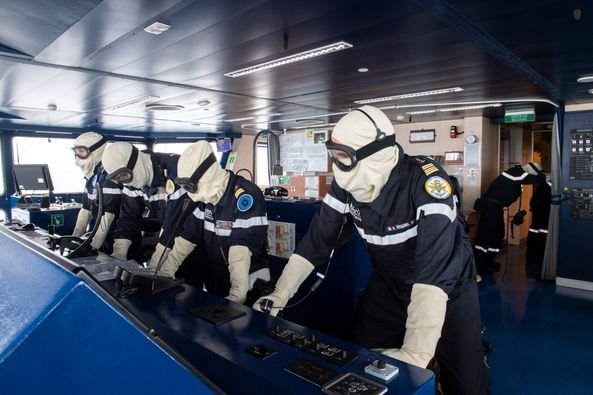What If… Episode 1 “Gulf of Aden Convoy”
What if…
In this new series of articles, I will explore fictional scenarios based on real-life situations with existing or soon-to-be operational hardware. All data are open-sourced.
In a recent speech to a new generation of graduating officers, the Chief of Staff of the French Navy stated that they belonged to a generation that would most probably experience high-intensity naval warfare.
The loss of mandatory conscription 25 years ago meant that citizens today do not understand what a blue water Navy is for.
These articles help them understand the challenges today’s Navy can overcome if they get proper funding. I aim to underline these challenges with a positive outcome.
French Navy convoy Escort
What if…the Gulf of Aden in the not-too-distant future
Once again, international supply lines are threatened. Since 2023, a majority of the 20,000 vessels navigating through the Suez Canal every year are facing drone and antiship missile attacks during their 1000 NM journey along the coast of Yemen.
Selective targeting means only Western-flagged ships are attacked.
It is important to remember that Navies around the world were created to protect merchant ships (thu mostly funded by company owners) against corsairs, pirates, and enemy states engaged in commerce raiding.
During the 80s, the tanker war triggered the formation of the French naval operation “Prometheus”, a task force escorting merchant shipping in convoys.
Now, Western states are facing the Houthi. After a lull in cruise missile attacks, mostly destroyed by air strikes, they reverted back to fast ships dropping mines or suicide drones launched from fishing boats acting as mother ships.
Very quickly a convoy system had to be implemented to cover the 3 days’ navigation. Each convoy now gathers with their escort in staging areas.
Never underestimate the effect on merchant crews of having friendly warships nearby.
After months of attacks repelled by top-of-the-range SAM missiles, It became very quickly evident that Western Navies needed to find new ways to shoot down inexpensive drones, also called loitering munitions attacking in swarms. Part of the solution was an evolution of the 1970 US Navy Arapaho project: containerized weapons on merchant ships.
Each convoy is now escorted by one warship networked with weapon containers, ready to be used, carried in repurposed merchant ships,
Armed merchant Ship
Warships cannot restock missile silos at sea. Their ability to network with off-board weapons solves the logistical issue and also acts as a force multiplier: Connected warships are no longer limited by what they are carrying but by the assets available on the network.
It also allows the deployment of new weapons very quickly, as they are formatted to the standard EVP containers any merchant ship can carry.
Warships had to adapt as well. Several crash programs saw the implementation of gun turrets with programmable airburst ammunitions and direct energy weapons (laser or microwave).
The Arapaho project materialised quickly, partially financed by insurance and freight carrier companies.
Today (in the probable future), a French convoy part of the PROMETHEUS II operation is sailing in the Gulf of Aden.
The now-famous Languedoc is assisted by one of the new armed merchants.
The 1000NM journey is monitored constantly by AWACS and maritime patrol aircraft, whose radars are powerful enough to detect very small ships, hundreds of miles away. Fighters from several nations also patrol the airspace to provide immediate assistance against surface attacks.
Western navies are kept on their toes; every day, they need to update a picture of everything floating in their area of responsibility. Merchant ships are easy to identify as they are all using transponders giving information about their identity, destination, and cargo.
Several times a day, a boarding party will be sent to identify dodgy fishing boats or intelligence-flagged merchant ships with suspicious cargo.
An inspection at sea is never a benign task; being airlifted by helicopter or with a semi-inflatable boat, the boarding party is always heavily armed.
photo NHIndustries
Sana, Republic of Yemen
The Russian station Chief does not usually hand over intelligence himself, but the Kremlin told him this is the opportunity they have been waiting for to get revenge for the sinking of the Cruiser Moskva and to get back at the arrogant French president for helping the Ukrainian nazis. His role is small but decisive. He will give his new friends the exact location of the French convoy thanks to the Kosmos 2570 Elint satellite flying over the area.
Shamal
After two gruelling years of training in Iran, where he was sent with many of his compatriots, the skipper of this commando unit is loading half a dozen crates on his fast boat. He has been waiting for the green light for months to get favourable weather for this mission. As soon as the sandstorm hits, he will sail due south at maximum speed en route to its target.
Around him, seven other boats are already warming up their engines, ready to go south at maximum speed to reach the shipping lane about 50 NM away.
Above the Gulf of Aden, the air traffic controllers are already starting to see the effect of the sandstorm on their radar. They quickly instruct civilian and military air traffic to reroute to avoid engine damage. All the warships connected to the same network can see flights diverting away from a very opaque cloud of reflective sand.
The convoy just lost its air cover.
The flotilla is now heading south at full speed in poor visibility. They do not need any expensive radar to find their target; they just need to follow the GPS coordinates given by their Russian friend. They hope to meet the French warship; they are ready for her.
After one hour of navigation due south, Merchant ships are almost within range.
Battle stations
The FREMM Frigate Languedoc turned her surveillance radar on, as soon as the AWACS announced the storm. Visibility started to decrease to less than 2 miles, but the radar of the frigate was powerful enough to see far without too much clutter. Her radar picked up the fast-moving surface contacts heading towards the convoy as soon as they went above the horizon.
In the operation room of the ship (CIC), the operator quickly shouted on the intercom,
“Contacts surface group inbound, 40+ knots, azimuth 45 to 100” head-on, possible hostile”.
The Officer in Charge of the operation room instantly shouts in the intercom, “Sound battle stations”.
FREMM CIC
After a few words with the commander, the radio operator warns the convoy to secure their crew in their ship citadel, an impregnable quarter, designed to protect its crew until rescue arrives.
In a matter of minutes, the Languedoc crew closes all waterproof doors, and on and off-duty crewmembers are making sure they are all suited up into anti-flash gear. Firing solutions are fed into weapons silos on the French destroyer and on the armed merchant for a ripple fire. Both ships are ready, just waiting for permission to fire.
The Armed merchant gives the Languedoc access to an impressive selection of weapons to defend the convoy.
Ten containers are on the deck with different types of siloed weapons. Five containers are dedicated to air defence bringing 80 MBDA CAMM missiles in three different versions to engage air targets either very close or very far away. Three more are equipped with Brimstone anti-tank missiles to deal with small surface targets up to 20nm away. The last two containers are at each end of the ship, with a 300 KW laser turret capable of engaging multiple drones in rapid succession for self-defence.
After several warning messages broadcasted over the VHF, it is now clear that inbound ships are hostile. The commander is bound by clear rules of engagement; he has the authority to fire in self-defence or if any unidentified ships cross the 5 NM no-go zone around the convoy.
On the armed merchant ship, the crew has no control over the weapon system. Their only cue is the rotating flashing light and horns for them to clear the deck with haste.
Weapons are about to fly!
The Languedoc can identify seven fast ships heading towards the convoy, all of them are now in the engagement bubble. The French destroyer is slower, but all the targets are within the convoy weapons kill zone.
Some crew in merchant vessels are starting to launch automated distress calls over the DSC radio as soon as they see the fast ships approaching.
The commander already has his fire plan ready, he will engage the farthest targets with a ripple of short-range missiles from the armed merchant and then engage the closest one with his 76mm gun. The ship also has Exocet missiles, but they would be wasted against such targets.
The weapons officer gets permission to fire as soon as the first target enters the convoy-restricted zone.
“Ripple Bulldog”
In less than 2 minutes, six targets were obliterated by 7 Brimstones, and none of the now-sinking ships got anywhere close enough to fire a shot.
The seventh target took a bit longer to die, the first few 76mm shells fell short, but the 5th one impacts the target, right after her skipper sends a message to the mothership 15nm behind.
Most of the fast crafts are only armed with short-range weapons and hand-carried Limpet mines. Not really a threat to any warships, but the mothership behind has a few surprises.
Zippo Alert
As soon as the mothership receives confirmation of the presence of a warship, the crew starts to deploy their small suicide drones. 20 Iranian copies of the US Switchblade weighing 15kg and launched from a tube, they can carry the equivalent of an antitank round up to 25 nm. But the Iranian engineers added a swarm attack mode based on commercial technology made famous above Windsor Castle, where up to 1000 drones flew in sync to create a memorable light show.
The operator has to only guide them towards the target for all the drones to synchronise their attack.
The 20 drones automatically sync at launch with the control unit of the operator and fly towards the French ship in a swarm, programmed to saturate the target from multiple directions.
Onboard the Languedoc, the commander orders his ship to accelerate towards the last radar contact.
Like any modern warship, the destroyer is also equipped with very sensitive electronic warfare equipment. A recent upgrade allows the detection of high-frequency drone signals. The electronics warfare officer's computer instantly recognises the threat.
“Drone emission detected bearing 355 ”.
For years, all Western navies invested a significant amount of resources and training to be ready for such a threat. The ship starts to bear away from the signal to expose her starboard flank to maximize the ship’s weapons and EM jammer engagement envelope.
These drones are too small, too close and too many to be engaged by the ship’s principal air defence system.
The Aster 15 can engage supersonic anti-ship missiles and medium-sized drones, but it is not designed for such a threat.
The first defence system to get into action is the starboard R-ECM active jammer. It starts to broadcast high-energy pulses in the direction of the signal source. The ship’s powerful radar also transmits at full power on the same bearing to optimise very small drone detection and potentially burn their electronics.
R-ECM Jamming turret
The jamming is successful. The operator loses all signals from the drones; they have to rely on their onboard default programming to attack anything their seeker recognised as a warship. Five drones inside the jamming beam instantly crash into the sea; their electronics either fried or confused by the high-energy pulses.
The 15 drones remaining, being more spread out, are not affected. They now fly at 150km/hour on a 2-mile front when they arrive within 4 nm of the French warship, less than 2 mn before impact.
The drones can now be engaged by the ship’s artillery and the jamming turret.
Both the 76mm deck gun and the 40 mm rapid-fire starboard turret are creating walls of hot metals on the path of the drones. They destroy 8 in rapid succession. But coming towards the ship from multiple angles to confuse the intercept geometry, some drones survive.
The two recently implemented HELMA laser turrets need a couple of minutes to be powered up, but they are now taking their share of the kills.
USNavy ships Helios DEW turret in 2023
The last layer of defence against the three remaining drones is ten marine commandos on the top of the ships between the Exocet launchers and the masts, manning miniguns and portable anti-drone guns.
One goes through.
The captain knows that some drones would come through, the Zippo alert was given over the ship radio 2 minutes before impact. “safeguard, safeguard, safeguard”. Training took over, and the ship’s company took the safety position to cope with a possible shockwave of the explosion; mouth open, tiptoes and knees bent.
The shaped charge is built to go through the armour of a tank. The ship has no such protection; the drone impacts the middle of the ship destroying the inflatable boat behind the metallic fence, starting a small fire.
The ability of a ship to survive any impact is its compartmentalisation to keep the fire from spreading and the ability of the crew to extinguish the fire quickly.
On the ship’s two widely separated control centres, the fire is immediately detected, electricity is cut in the damaged compartment and automatic sprinklers are activated. Minutes later, a firefighter crew is onsite to stop the fire. The commander is quickly made aware that his ship is still mission-capable, and the decision to engage the mothership is taken before another drone attack can be launched, even if the mothership is now going full speed toward the coast.
“Weapon officer, this is the captain, load 2 Vulcano rounds, airburst mode at 50m and engage Sierra 8” Fire at will”.
The gun operator selects the correct ammunition and fire parameters and acknowledges the order:
“2 Vulcano, airburst mode 50m, engaging Sierra 8”.
In less than 30 seconds, the ship autoloader feeds the programmable long-range guided ammunition into the weapon breach, swivels the turret towards the target and elevates the gun, compensating for distance and target velocity. The computers tell the operator the weapon is ready; the trigger is pulled.
“2-shot salvo, fire”.
The Vulcano ammunition is GPS/INS-guided until the Infrared seeker can acquire the target. This brand-new ammunition boosts the range of the gun to a very respectable 24 nm, with metric accuracy.
After a very short guided flight, both rounds explode exactly 50m above the ship, instantly killing everyone onboard, destroying both engines and detonating the fuel.
” impact, the target is slowing down”.
Target destroyed.
Aftermath
The commander is now thinking of his post-battle report.
Could he have done things differently? Does the French navy need new tactics or hardware upgrades?
But one thing is for sure; this swarm attack would have taken a very different turn without the recent equipment made available thanks to the multiple crash programs.
One hour later, the commander officially relayed to his crew over the intercom the official congratulations from the French Navy Headquarters, the French president and all the ships in the convoy.
Fifteen years ago, the French frigate Jean Bart earned the right to name her 100mm turret “Ferocious” after a night fire mission with the French Army aviation off the coast of Lybia.
Tonight, it is the Languedoc crew’s turn to find names for their turrets.
Great Navies are built on tradition.
Sources
French navy
Harpoon V admiralty series
https://thegeopolity.com/2021/03/31/mapping-the-worlds-key-maritime-choke-points/
What‘s going on https://www.youtube.com/watch?v=aWvzS5E00Y8
Arapaho project https://www.usni.org/magazines/proceedings/1978/march/containerized-weaponsand-merchant-warships
Iron Beam https://en.wikipedia.org/wiki/Iron_Beam


